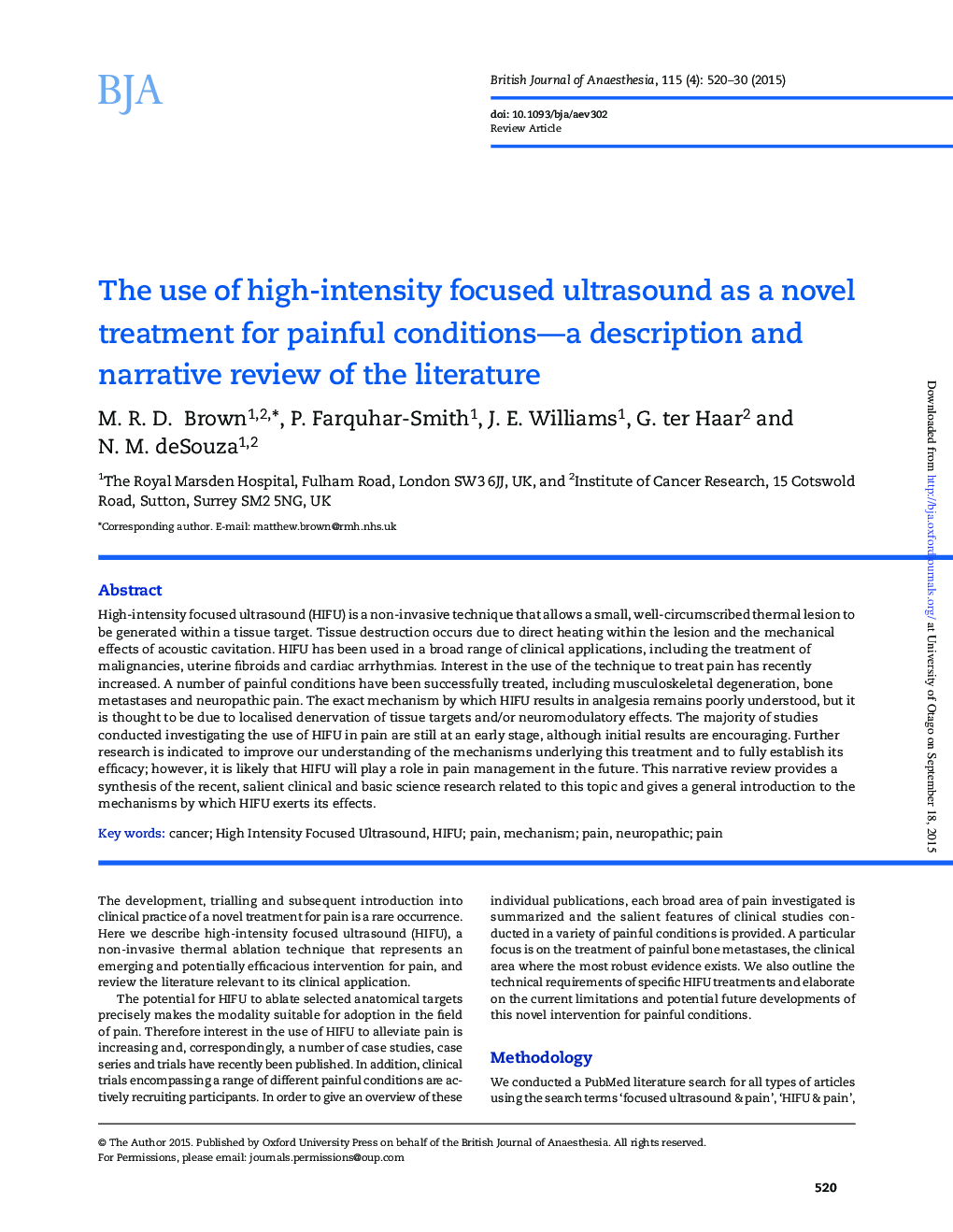| Article ID | Journal | Published Year | Pages | File Type |
|---|---|---|---|---|
| 8931432 | British Journal of Anaesthesia | 2015 | 11 Pages |
Abstract
High-intensity focused ultrasound (HIFU) is a non-invasive technique that allows a small, well-circumscribed thermal lesion to be generated within a tissue target. Tissue destruction occurs due to direct heating within the lesion and the mechanical effects of acoustic cavitation. HIFU has been used in a broad range of clinical applications, including the treatment of malignancies, uterine fibroids and cardiac arrhythmias. Interest in the use of the technique to treat pain has recently increased. A number of painful conditions have been successfully treated, including musculoskeletal degeneration, bone metastases and neuropathic pain. The exact mechanism by which HIFU results in analgesia remains poorly understood, but it is thought to be due to localised denervation of tissue targets and/or neuromodulatory effects. The majority of studies conducted investigating the use of HIFU in pain are still at an early stage, although initial results are encouraging. Further research is indicated to improve our understanding of the mechanisms underlying this treatment and to fully establish its efficacy; however, it is likely that HIFU will play a role in pain management in the future. This narrative review provides a synthesis of the recent, salient clinical and basic science research related to this topic and gives a general introduction to the mechanisms by which HIFU exerts its effects.
Related Topics
Health Sciences
Medicine and Dentistry
Anesthesiology and Pain Medicine
Authors
M.R.D. Brown, P. Farquhar-Smith, J.E. Williams, G. ter Haar, N.M. deSouza,
